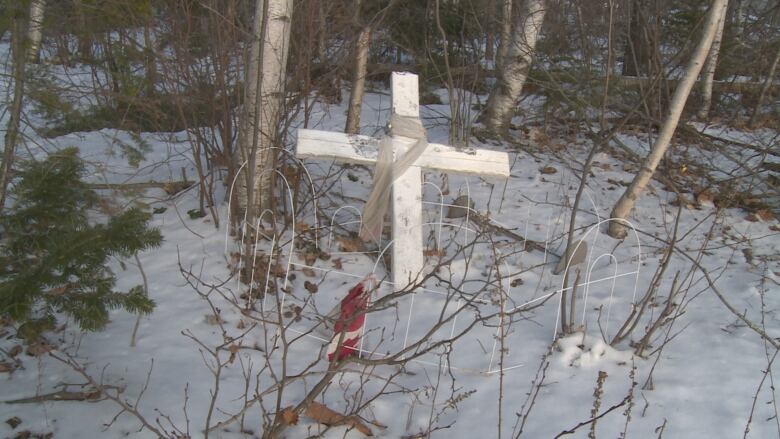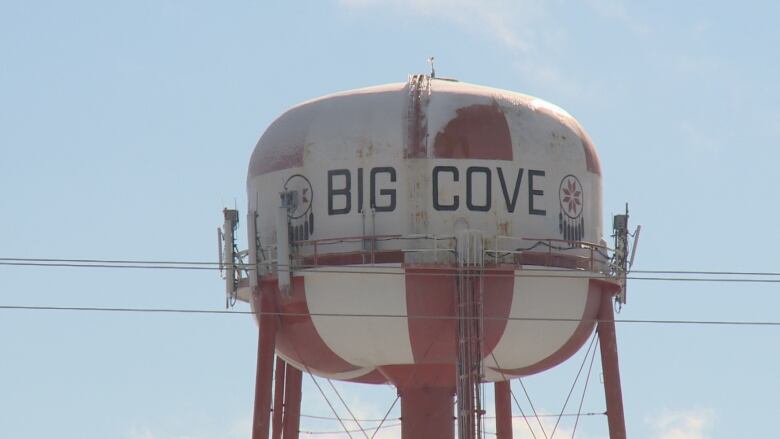First Nations child welfare facing reform a decade after abused teen's suicide
New Brunswick's First Nations child welfare agencies are poised to merge, 10 years after calls for change

Child welfare agencies on First Nations reserves in New Brunswick are on the cusp of a major overhaul, nearly a decade after the suicide of a teenage girl who was sexually abused in a foster home.
The new system is poised to give the agencies more resources, something officials say is desperately needed.
But those same officials are reluctant to discuss the death that led to calls for change or the screening system that failed her.
Mona Sock was 13 when she took her own life behind the arena on Elsipogtog First Nation on Sept. 26, 2007, the day her abuse was revealed to police.
Mona's brother-in-law, Lonnie Francis, was later sentenced to two years and six months in prison for two counts of sexually assaulting her.
According to her family who recently revealed to CBC News new details about Mona's life and death the young girllived in a foster home with Francis and her sister Harmony for several years, even though Francis had been convicted of sexual assault in 1999.
"The rules were clear in the case of Mona Sock and there should have been a criminal background check," Bernard Richard, the former New Brunswick child and youth advocate, said in an interview.

Progressive Conservative MLA DorothyShephardcalled the case "horrific."
"You can't have information like that stowed away," saidShephard, who istheparty's critic for children and families.
Harry Sock, director ofthechild welfare agency on theElsipogtogreservenearRexton,said he couldn't talk about Mona. He declined to be interviewed.
Missing context
Mona's death triggered a review by New Brunswick's child death review committee, which makes recommendations to prevent future deaths.
A CBC News investigation has found that at least 53 unnatural child deaths have been reviewed by the committee since it formed in 1997, but the findings are almost entirely secret.
Although the committee's recommendations are public, they often lack key details.
After Mona died, for example, the public saw a recommendation about better guidelines for background checks for foster parents on First Nations reserves.
The committee didn't mention that Mona was allowed to live in a foster home with a convicted sex offender.
"My view has been, and it remains the same today, that if a child dies needlessly, we need transparency about that death," said Richard, who is now British Columbia's representative for children and youth.
"If that kind of transparency can prevent another loss of life, then it's well worth it. I think it's a matter of dignity."

Outdated system
After Mona's death, the former Liberal government asked Richard to review the First Nations child welfare system in New Brunswick.
First Nations children, he wrote, were six times more likely than other children to be taken from their homes and placed in foster care. (As of Nov. 30, 2016, there were 738 New Brunswick children in care, but the province doesn't break down the number by ethnicity.)
Richard discovered a web of 11 different child welfare agencies. All but one operated on a paper-based filing system.
"In essence, this amounts to 25-year technology gap in comparison with the province's child welfare system," he reported.
Richard proposed a new structure that would see the number of agencies whittled down to three. There would be one each for Mi'kmaq and Maliseet communities, and one for Elsipogtog First Nation, the largest reserve by population.
Richard created a roadmap for the merger, with a deadline of April 1, 2011.
Six years later, almost all First Nations child welfare agencies now use NB Families, the digital case-management system used by the provincial government's child welfare agency. That makes it easier to screen prospective foster parents who have lived off reserve.
But the merged system Richard recommended is still a work in progress.

Change on the horizon
At Four Directions Child and Family Services on Buctouche First Nation, three social workers juggle a stack of cases from five different First Nations communities.
The number of social workers needed on the job is based on the number of children who live in each community.
But that calculation doesn't take into account the range in complexity of the cases, according to director Joanne Brun-Cormier.
Nor does it leave social workers any time to recruit and train foster families. Each time a child is taken into care, the agency must scramble to recruit a foster family.
"We have a mandate to provide child and family [services] with no funding," Brun-Cormier said. "It's ridiculous."
She's hopeful things will change soon. A year ago, the Canadian Human Rights Tribunal ruled that inadequate funding for child welfare services on First Nations communities amounts to discrimination.
Brun-Cormier hopes the ruling will mean more funding for First Nations child welfare agencies.
"It's always been about funding," she said.
"We want to do things differently but we have no money."

More checks and balances
There's no timeline for the merger proposed by Richard. But Brun-Cormier believes the agencies are close to making it official.
The amalgamation has support from Indigenous and Northern Affairs Canada, which funded a working group to help design the three new child welfare agencies, spokesman Shawn Jackson wrote in an emailed statement.
He said the amalgamation will "create administrative efficiencies" that will improve the quality of child welfare services.
For Four Directions, the amalgamation would mean merging with Eel River Bar, Eel Ground and Esgenopetitj, a move that Brun-Cormier estimated would triple the agency's staff.
"We would have a whole unit on foster homes, child-in-care programs, and a whole unit on prevention."
She would like to see a system that can do more preventive work with families.
But will it prevent another Mona Sock?
Brun-Cormier said the system has more checks and balances than it did 10 years ago.
Still, shewas reluctant to talk about Mona or whether her death was a wake-up call for First Nations child welfare agencies.
"I don't think I can answer that because I'm not aware of the details of Mona's death."

Part 1:The Lost Children: The secret life of death by neglect
Jackie Brewer, the 2-year-old who was ignored to death
How New Brunswick's child death review system works
Part 2:The Lost Children: 'A child that dies shouldn't be anonymous'
Haunted byJuli-Anna: An 'agonizingly painful' preventable death
Part 3:The Lost Children: Change on horizon for First Nations child welfare
Mona Sock, a life stolen by abuse
Part 4:The Lost Children: Government weighs privacy over transparency in child deaths
Baby Russell: A few minutes of life, then a knife in the heart
Do you have a tip about this story? Get in touch with CBC New Brunswick Investigates by clickinghere.













_(720p).jpg)


 OFFICIAL HD MUSIC VIDEO.jpg)
.jpg)



























































































